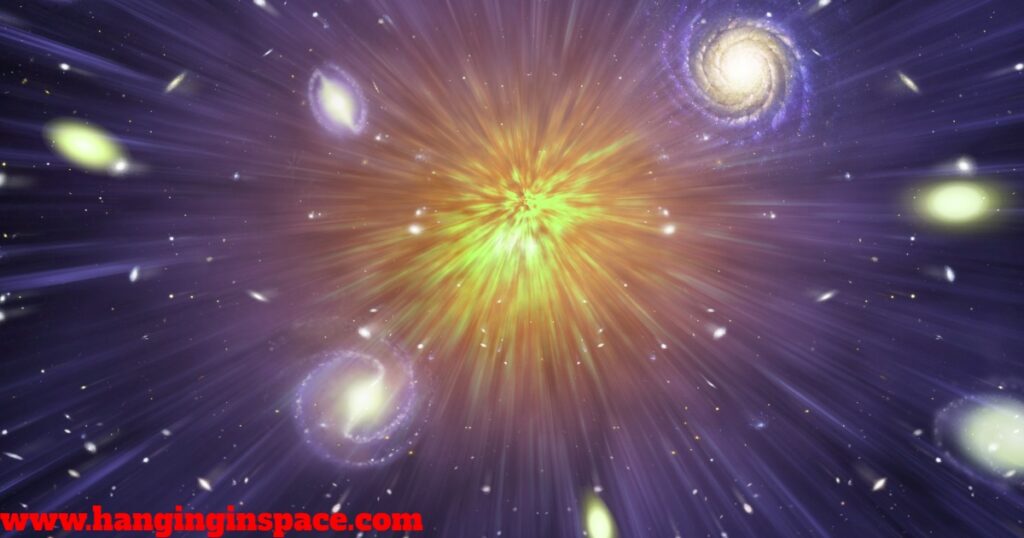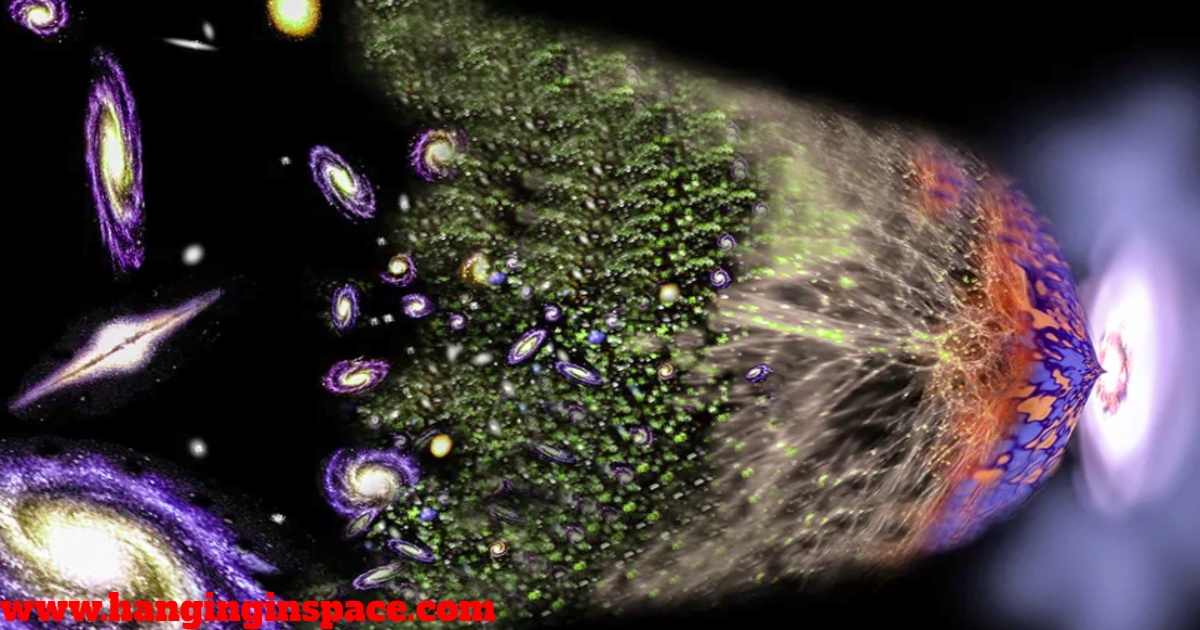Astronomers’ most effective theory to describe how matter, space, and time came into being 13.7 billion years ago is the Big Bang Theory.
It argues that the universe as we know it began with an unimaginably hot and dense single point that expanded and stretched over the following 13.7 billion years to become the still-expanding cosmos that we know today, first at unfathomable speeds and subsequently at a more measured rate.

What is the Big Bang Theory?
Since astronomers are currently unable to physically see back in time to the universe’s creation, a large portion of our knowledge of the Big Bang explosion is derived from mathematical formulas and models. Nonetheless, the “echo” of the expansion is visible to astronomers thanks to a phenomenon called the cosmic microwave background.
Singularity:
Everything in the universe was compressed into a tiny singularity, a point of infinite heat and density, about 13.7 billion years ago.
Big Bang:
Our universe started to expand at an accelerated rate, surpassing the speed of light. The 1980 theory of physicist Alan Guth states that this phase of cosmic inflation lasted only a few hundredths of a second or roughly 10^-32 of a second.
Expansion:
The more conventional theories of the Big Bang gained traction when cosmic expansion abruptly and mysteriously ended. Known as “reheating,” a deluge of matter and radiation started to fill our universe with the elements we recognize today. Atoms, particles, and the material that would eventually form stars and galaxies, among other things.
Formation of the Universe:

According to NASA, all of this occurred at the initial instant of the universe’s creation, when the temperature of everything was still incredibly hot, roughly 10 billion degrees Fahrenheit (5.5 billion degrees Celsius).
Now, a wide variety of fundamental particles, including protons, neutrons, and electrons are present in the universe, These would eventually serve as the building blocks of everything that exists today.
Since it was unable to contain visible light, this early soup would have been invisible to the naked eye. “The free electrons would have caused photons (light) to scatter the way sunlight scatters from the water droplets in clouds,” said NASA.
However, over time, these free electrons came into contact with nuclei and formed atoms that were either neutral or had an equal amount of positive and negative electric charges.
This occurred roughly 380,000 years after the Big Bang and made light visible for the first time.
The cosmic microwave background (CMB) is the official name for the light that is sometimes referred to as the “afterglow” of the Big Bang. Though Ralph Alpher and other scientists first predicted it in 1948, it wasn’t discovered until nearly 20 years later, by mistake.
According to a NASA article, Arno Penzias and Robert Wilson of Bell Telephone Laboratories in New Jersey made this unintentional discovery in 1965 when they were constructing a radio receiver and detected higher-than-expected temperatures.
When they cleaned up the mess and killed the pigeons, the anomaly continued to exist. Initially, they believed the abnormality was caused by pigeons trying to roost within the antenna and their waste.
Concurrently, a group at Princeton University under the direction of Robert Dicke was searching for proof of the CMB when they realized Penzias and Wilson had discovered it through their peculiar observations. In 1965, the two organizations each had publications published in the Astrophysical Journal.
Conclusion:
The Big Bang Theory proposes that all of the matter and energy in the universe was once concentrated in an incredibly hot, dense state. Roughly 13.8 billion years ago, this singularity rapidly expanded and cooled, setting the stage for the formation of particles, elements, galaxies, and us.
